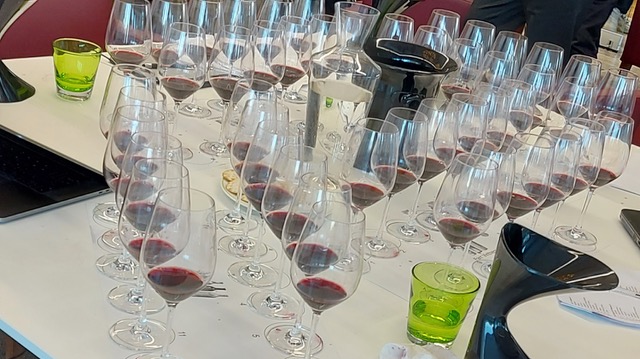

2020 is a remarkably consistent, extremely high quality, year for red Bordeaux. The wines are much more classical – think dry, savoury, structured, brisk – than in many recent years, yet they are also informed by the best of contemporary viticulture and winemaking techniques.
I am sure someone else has already said it but I have started to think of 2020 as a neo-classical vintage. Fans of traditional Bordeaux are going to find plenty to enjoy, at all price points, but these are wines born of thoroughly modern methods.
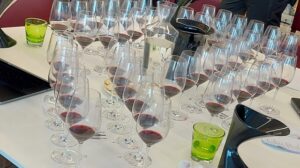
Bordeaux released its 2020 vintage during lockdown. We were unable to travel to France for the usual barrel tastings. Instead, I first experienced the wines sat around my dining table – with socially-distanced friends and colleagues – tasting samples that had been prepared in Bordeaux and shipped to me in the UK, arriving on my driveway arriving on a pallet!
Tasting barrel samples remotely has to be about the worst way to try and gain an understanding of a new vintage, so I have never really felt I had a good overview of 2020. Following that first introduction to the vintage, there was a nice sense of symmetry tasting the 2020s from bottle, around tables with my friends from the Southwold group. The key difference being that tasting finished wines left me much more confident that I have a good read on Bordeaux 2020.
This was not an easy tasting, I found it hard going at times. When we tasted the 2010s it was alcohol that wore us down. That is not the case in 2020, where the majority of wines are relatively modest in alcohol. Ex-chateau samples do not always wear the wine’s official label – for example, the Latour that has not yet been commercially released – so no ABV is listed. Of the wines showing alcohol levels on the label, the majority seemed to be 13.5%, with some at 13%, on the Medoc and only the outliers topping 14%. The top right bank wines, and those from the warmer microclimates of Pessac, tended to be a degree higher. In 2020 it is the structure and tannin build up, potentially coupled with elevated acidity, that I found tiring.
Of course, tasting young Bordeaux is not meant to be easy and very few of these wines are made to be approachable just four years from vintage. I am not concerned that it was a challenging tasting, because many of the wines were simply screaming out for age and that is a big part of the point of smart Bordeaux for most of us. Rather, it is a notable contrast with the generosity of some recent vintages; here we have a year with a much more classical structure.
2020 is not the year for easy-going, richly textured, sensuous Bordeaux reds. There is no lack of ripeness, and very few instances of green or herbaceous characters, but the fruit is sheathed in significant tannin and accented by quite elevated acidity
The combination of crisp acid and crunchy tannins led me to describe many wines as brisk. In most cases the wines’ profiles are solidly savoury and dry. Whilst there are high levels of intensity, many wines feel compact and tightly coiled.
In some ways, I wonder if there are parallels with how the 2005s tasted at a similar age but, whilst both are very structured vintages, I suspect the ripeness of 2005 has always been a little more marked. At other times I am quite taken by the idea that 2020 has captured something of the essence of Bordeaux’s Atlantic personality in combination with the ripeness delivered by today’s climatic conditions.
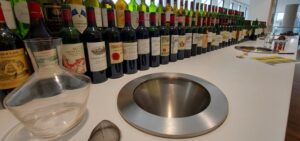
I have made a big deal of the consistency of 2020, and I stand by that as many of the scores for each flight were tightly clustered, but the bigger picture is a bit more complex.
During one of the post-tasting discussions, a few tasters commented that 2020 is not a year to buy lots of second wines. Of course, exceptions exist: I loved Alter Ego and think both Segla and Pichon Comtesse Reserve offer compelling value for money. However, there are plenty more examples to suggest you approach second wines with a degree of caution in 2020.
Why might this be? If the team at Chateau xx produced an admirable Grand Vin, what might have caused issues for the Deuxieme Vin?
We can only theorise, but it may be a consequence of Covid-19. 2020 was not an easy vintage and required plenty of work in the vineyards.
To start to understand this, consider the harvest. In order to pick grapes at the optimum moment, you need a high degree of precision in choosing the harvest date and then the ability to pick the grapes at the correct speed: either as fast as possible to capture them at just the right moment, or over a period of time so you can work block-by-block based on different ripening times within your vineyard.
With lock down restrictions in place, labour was a significant problem in Bordeaux in 2020. Particularly when you consider that many chateaux rely on foreign workers, often from eastern Europe or even central America, to pick their fruit. The same teams may reassemble each year, but they frequently travel from overseas and are often itinerant workers, following harvest seasons around different countries and regions. It is therefore plausible that, unable to recruit the usual harvest force, estate manager chose to concentrate on maximising the potential of their Grands Vins and the second wines suffered as a result.
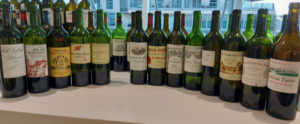
Each year the wines of Saint Emilion move further and further from the shadow of the super-charged bodybuilder wines of their past. Over extraction, raisined fruit and astringent tannins are now only shown in a distinct minority of wines and the hallmarks of ‘modernist’ Bordeaux now feel decidedly old fashioned. Red fruit, fragrance and elegance are now the order of the day.
Chateau Belair Monange was my favourite Saint Emilion and rivalled Trotanoy as my pick of the right bank. It leads my Top Five with 96/100. Taking up the other four spots, each with 95/100 we have:
This year I did not find a clear quality distinction between Saint Emilion and Pomerol; both fielded outstanding wines. What Pomerol did demonstrate, though, was 2020’s combination of consistency and quality.
Of over 30 Pomerol wines (plus ringers) in the tasting, I rated 11 94/100 or higher. What’s more one of the ringers – Les Cruzelles, from Lalande de Pomerol – is in that group. With 94/100, under blind conditions, I rated Les Cruzelles on a level with Le Pin and ahead of La Conseillante, L’Evangile and Le Gay. It is not going to last for ever but, even if my scoring is a ways off, this has to be one of the bargains of the vintage.
With its crescendo of mineral, saline, chalky structure, Chateau Trotanoy was my stand out Pomerol with 96/100, although the group preferred L’Eglise Clinet. I am unable to offer a Top Five from Pomerol as six wines got 95/100:
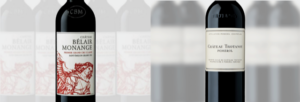
Pessac’s naturally structured style, in a year that emphasises structure, made for some challenging tasting. Perhaps the challenge was heightened by the fact that Pessac’s proximity to the city tends to give higher temperatures and therefore an extra degree of alcohol to sit alongside the marked tannin and acidity. However, challenging as they may be, there is also a lot of reward in Pessac.
Top wines aside, if I were building a cellar of classic wines to drink in a decade’s time, without having to sell any organs, I would make Pessac one of my first stops. Almost criminally over-looked by the market, wines like Chateaux de Fieuzal, La Louviere and Couhins Lurton offer rich pickings to bargain hunters seeking ‘trad claret’ in 2020.
Back to the heights of the appellation, it is not surprising to see Chateaux Haut Brion and La Mission Haut Brion in the top spots, but these were not without controversy. La Mission, which already has a perfect 100/100 from William Kelley at The Wine Advocate, was well-rated by the group and came ahead of every Medoc 1st growth except Chateau Margaux. My high rating of Haut Brion – I loved the tension, minerality and taut muscle – put me out on a limb. I suspect the group was split by the high alcohol here, with Haut Brion’s warm microclimate delivering a whopping 15% in 2020. I maintain the wine has the substance and density to be balanced.
I found a Top Four in Pessac:
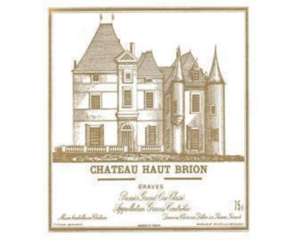
Scores for Margaux were not massive, across the board, at this Southwold tasting. That said, Chateau Margaux was the group’s #1 1st growth, although by my own rankings it came below the other four with 94/100.
Embarrassingly – or not?! – my top wine from Margaux with 95/100 turned out to be Segla, Chateau Rauzan Segla’s 2nd wine. These things happen in blind tastings and it is tempting to edit this out of my report. I am sure I am wrong and that Chateaux Palmer, Malescot St Exupery, Rauzan Segla, etc are all far better but I will leave it in as blind tasting is all about humility (and being wrong). Plus, Segla has to be one of the great buys of 2020 and it did come in the group’s Margaux top five.
My other high scoring Margaux 2020s, both with 94/100:
Always the Medoc’s most consistent commune, Saint Julien performed true to form in 2020. Chateau Leoville Poyferre typically scores highly at this tasting and this is usually attributed to its flashy, rich and glossy style. It was little surprise that Poyferre was the group’s preferred 2020, except that the style seems markedly different from usual. Tannic, introverted and dry, but sustained by its fruit, I wondered if this was a Barton wine – the polar opposite of my usual reaction to Poyferre!
I was out of sync with my colleagues on Poyferre, rating it 92/100, and gave my top score to the group’s #2 wine: Chateau Beychevelle. Very different from the rather light, red-fruited wines of the past, this was stylish, layered and full of energy: 95/100. On an equal standing I rated Chateau Saint Pierre the same 95/100 for its sleek, pure, Pauillac-like personality.
Just behind the top two I had Chateau Leoville Barton and the brilliant Gloria, both on 94/100. Leoville Barton seems to have gained a bit in volume and richness in recent years. In 2020, Gloria would be close to the top of my buy list for value.
Pauillac delivered some thrilling tasting and, writing up this report, it is a relief to have a clear cut Top Five once more:
No surprise to see the three 1st growths making the cut and little surprise that Mouton once again performs so well in a blind tasting. Overall the group had a similar ranking of the 1st growths although, on average scores, GPL would not have made the Top Five and Pichon Baron would take its place.
Chateau Pichon Lalande is an outright stunner in 2020 and is clearly at 1st growth level. It and Chateau Montrose (more to come) are clearly on a different level to the other super seconds in this vintage. It is also worth noting that I rated Pichon Comtesse Reserve, the new incarnation of Reserve de la Comtesse, just outside of this group with 94/100. Like Segla, this is a rare 2nd wine to buy with both confidence and enthusiasm.
I was out on a bit of a limb with Lafite, and others rated other Pauillacs above it, but I loved the elegance and classicism. I will also mention, as I know many people will love and applaud this, that this is a mere 12.5% alcohol (on the label).
Last but very far from least, the Medoc’s most northerly commune produced the overall winner of Southwold’s 2020 tasting: an imperious Chateau Montrose. This is an estate absolutely at the top of its game. Last year Montrose came in overall second place, to Latour; this year it took the crown.
Personally I rated Montrose slightly behind my colleagues, at 95/100, my preference was for Pichon Lalande and some of the 1st growths, but it is undoubtedly a wine of enormous class and impact.
From the famously blockbusting 2009, Cos d’Estournel has turned to making much more classically-styled wines and the 2020 is back to 13.5% alcohol. This was another wine to split our panel but I found impressive lift on the mid-palate and admired the driving, mineral finish. My score for Cos was 93/100.
Beyond the headline acts of Montrose and Cos, I want to highlight some of the mid-tier Saint Estephe wines that stood out. Each of these falls into that category of affordable, age-worthy, traditional Bordeaux in which 2020 excels.
The above are my scores but Ormes de Pez and Tronquoy – under the same ownership as Montrose – took places two and three in our overall ranking, ahead of Calon Segur!
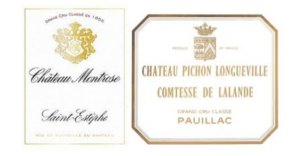
I left Southwold in no doubt that 2020 is a top tier vintage. There are some exceptional wines, especially for fans of a more traditional style, and the consistency is extremely impressive. I own a good bit of 2020, and will probably buy more, but – if pushed – this is not a vintage I love. For me, the fireworks of 2019 and the brilliance of 2016 are both more thrilling and more compelling.
When you study for the MW exam Bordeaux is counted amongst the Classic Regions (of course it is!) that you have to know, and one goes to Bordeaux for classic wines. However, in 2020 I think I am missing some of the high wire risks that years like 2019 deliver. 2019 has misses as well as hits, but those hits deliver a visceral thrill that I missed in this tasting. We saw amazing wines but I never found myself wavering over 99 or 100 points.
For these reasons, of recent vintages, I place 2020 in 3rd place behind 2019 and then 2016. 2010 I put on a par with 2020, but 2010 is a year of high risk wines and a number fell off the wire; 2020’s great strength is in its consistency.
A cellar full of 2020 Chateaux Gloria, Les Cruzelles, Grand Puy Lacoste and Segla will make you very happy, likely never let you down and shouldn’t break the bank. Belair Monange, Haut Brion, Pichon Lalande and Trotanoy are world class 2020s. The occasional Montrose 2019 or VCC 2016 will deliver the fireworks.